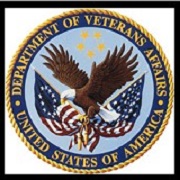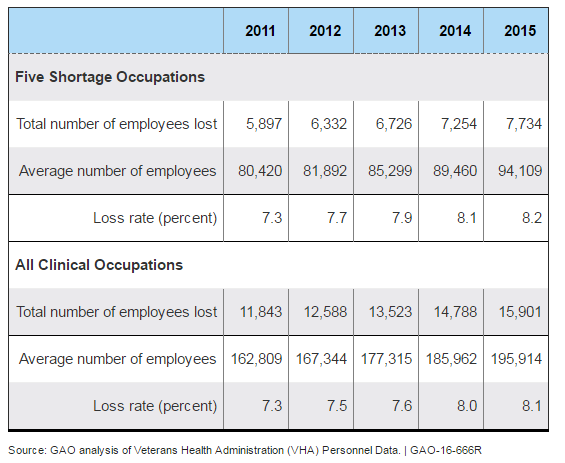Patient Wait Times Still High at Veterans Health Administration
Veterans Affairs and the Veterans Health Administration is still experiencing significant staffing shortages and elongated patient wait times.

- While there have been few major problems within the federal Medicare program that have led to any defamation of the federal agency, Veterans Affairs and, specifically, the Veterans Health Administration often has had its fair share of critics. Often, the VA is cited for having long wait times and failing to provide care and coverage for the country’s veterans.

Two years ago, the Veterans Health Administration was in the midst of a scandal in which long waits and problems with scheduling visits with healthcare providers led to as many as 40 United States Armed Forces veterans perishing while waiting for care at Phoenix, Arizona Veterans Health Administration facilities. Since then, the Veterans Affairs Inspector General has been looking into the major issues surrounding the long wait times for VA healthcare services.
This news even led the former Secretary of Veterans Affairs Eric Shinseki to step down from his position. Since the deaths of these veterans, there has been a general political climate that has sought to change ways, but the problems still haven’t been diminished. In fact, a report that came out the summer of 2014 shows significant misconduct on the part of VA employees.
The Washington Post reported earlier this month that, while the demand for healthcare services from the Veterans Health Administration has grown, the number of clinicians and other healthcare providers working with the VA has diminished greatly in recent years.
Starting in 2011, the number of nurses, physical therapists, medical doctors, psychologists, and physician assistants that left their position with the Veterans Health Administration totaled nearly 6,000 and this number has only increased since then, totaling out at 7,734 in 2015.
“Nurse staffing directly impacts the number of available operating beds for paralyzed veterans requiring initial rehabilitation, acute care, and annual evaluations. Because of under-budgeting and inadequate staffing, VA was forced to use excessive overtime hours and flawed staffing methodologies as band aids to make up for a problem that required more serious intervention,” Paralyzed Veterans of America’s (PVA) Executive Director Sherman Gillums Jr. told the source.
“This had led to costly turnover and low morale among staff, not to mention artificially suppressed demand due to open but unstaffed beds, all of which render care less than optimal.”
More recently, however, the VA has released statements claiming that nearly 97 percent of medical appointments are scheduled within one month of a veteran requesting care. Some of the ways that the VA is attempting to incentivize providers to remain with the Veterans Health Administration is by increasing pay among certain medical professionals.
The Government Accountability Office (GAO) released a report outlining the reasons why some healthcare providers left their positions with the VA. First, 28 percent of those who left admitted that the lack of advancement led them to pursue other career options. Other reasons included general dissatisfaction with the work. The results also show that about two-thirds of VA employees were satisfied with their occupation.
“The GAO report points out what DAV [Disabled American Veterans] has been saying for years,” Garry Augustine, Executive Director of DAV’s Washington headquarters, told the news source. “The primary reason for veterans’ access problems and waiting lists is there are not enough doctors, nurses and other healthcare providers to meet the demand.”
The long wait times that made headlines several years ago were likely associated with the staffing shortages taking place within VA healthcare services. The original scandal likely led to an inadequate perspective of this particular federal agency, which clearly didn’t help the VA with clinician or nursing recruitment.
When the truth about long wait times leading to the death of veterans surfaced two years ago, the Obama administration went forward with positioning $15 billion into the Department of Veterans Affairs to end these major delays, according to The New York Times.
Certain questions remain though regarding whether any major improvements occurred after the legislation was passed and this money was poured into the VA. While some have cited improvements, there are still 526,000 veterans waiting longer than a month for an appointment with a physician while 88,000 take longer than three months to receive healthcare services, according to data from the federal agency itself.
“We are hearing doctors say they won’t take part in the program because they aren’t getting paid,” Representative Jeff Miller, the Florida Republican who is chairman of the House Veterans Affairs Committee, told The New York Times.
The Obama administration has sought to allow veterans to see physicians outside the VA while also hiring more physicians to address the demand. However, the average wait time for primary care has not dropped but has actually increased slightly. The Veterans Health Administration will need to work toward uncovering gaps in care that lead to these excessive wait times and develop new methods to crack down on inefficiencies.
Dig Deeper:
VA EHR Interoperability Still Lagging, Senate Hearing Finds
VA Boosts Patient Access to Care, Engagement Strategies

